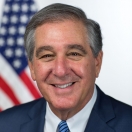
Today, the White House is launching the State Challenge to Support Native Youth, a part of the Administration’s Generation Indigenous Initiative.
President Obama launched the Gen-I Initiative at the 2014 White House Tribal Nations Conference to focus on improving the lives of Native youth. Through new investments and increased engagement, this initiative takes a comprehensive, culturally appropriate approach to ensure all young Native people can reach their full potential.
The initiative includes a National Native Youth Network in partnership with the Aspen Institute, a demonstration program called the Native Youth Community Projects, administered by the Department of Education, a restructuring of the Bureau of Indian Education, a Cabinet Native Youth Listening Tour, and the first ever White House Tribal Youth Gathering, a collaboration between the White House, DOJ, HHS, and UNITY Inc, which took place on July 9, 2015.
We encourage all Governors and Lieutenant Governors to take the State Challenge to Support Native Youth and become a part of Generation Indigenous. We’d like to thank the National Lieutenant Governors Association for passing a resolution on July 10 supporting the state challenge and we applaud the work of those who worked hard to make the resolution a success.
Who can take the White House State Challenge to Support Native Youth?
Governors and Lieutenant Governors from States across the country can take the challenge to support Native youth.
Steps for Completing the State Challenge:
1. CONVENE: Within 60 days of accepting the Challenge, convene a meeting with tribal leaders in their state, as well as urban institutions and organizations, to discuss ongoing initiatives and areas in which they might be able to collaborate and form partnerships to improve the lives of Native youth and their systems of support.
2. PLAN: Within 60 days of the convening, and with the benefit of the input from participants, draft a report laying out concrete proposals for creating and advancing initiatives that would expand opportunity for Native youth. These proposals could range from gathering data that could help inform state policy recommendations, to expanding access to internship and mentoring programs, to improve educational opportunities for all young people, to convening a youth summit or roundtable to discuss these important issues.
3. PUBLISH & SHARE: After drafting the report, be active in sharing your work to inspire other state leaders to partner and work more closely with tribal governments to support Native youth. Document policy improvements, structural support, best practices and success stories to share with stakeholders and other leaders through state and national forums.
Some specific actions to highlight your efforts might include:
Posting your commitment and efforts using the #GenI hashtag
Sharing your report and progress through social and traditional media
4. TAKE ACTION: Within 60 days after releasing your report, announce your intent to implement at least one specific recommendation it made. This can be another opportunity to share your work and progress with the public and other state leaders.


